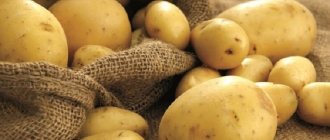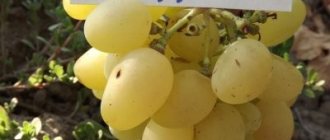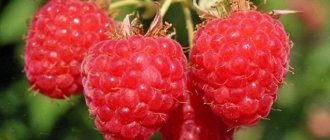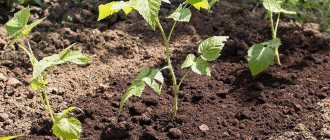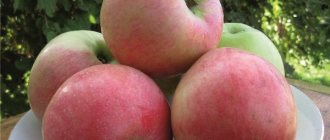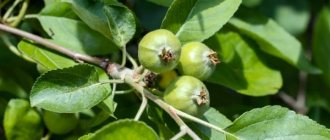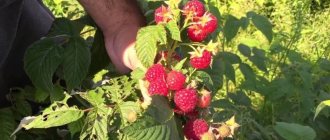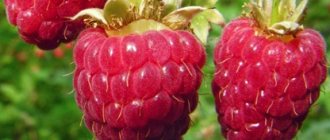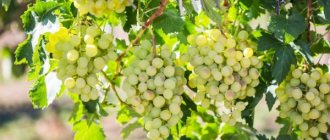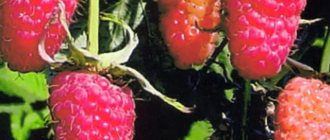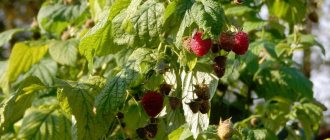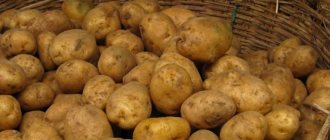History of selection
This variety of berries was obtained in the 90s of the XX century. as a result of crossing raspberries Novost Kuzmina and Kostinobrodskaya. An employee of the stronghold of the All-Russian Selection and Technological Institute of Horticulture and Nursery, Russian breeder I.V. Kazakov, worked on the creation of a new variety. He wanted to get early-ripening and easy-to-care raspberries, characterized by high yields. In 1992, the Solnyshko variety was included in the State Register and began to actively gain popularity among gardeners.
Did you know? You can make aromatic herbal tea from raspberry leaves. To do this, they are rubbed in hands until the juice is released, and then dried in the oven.
The best yellow-fruited early varieties
Yellow fruits contain a minimum of anthocyanins and are less likely to cause an allergic reaction.
Did you know? The crimson flower always has its petals down, so bees easily pollinate it even in light summer rain.
Fugitive
The fugitive was entered into the State Register in 2009 and allowed for cultivation in the Central region. The bush has an average growth force (up to 1.5 m) and consists of 7–9 shoots with a weak covering of thorns. Resistance to drought and heat is moderate, as is endurance to low temperatures. Bushes rarely suffer from fungal problems, but are often affected by spider mites and mycoplasma growth. The plant easily reproduces by root shoots and quickly occupies the area of the site, spreading beyond its borders.
The berries are distinguished by their rounded-conical appearance, weigh up to 2.5 g and have small seeds that crumble easily. They are colored in golden apricot shades and have a sweet and sour taste (acid 1.6%, sugar 7.1%). The average yield is 76.3 c/ha or about 2 kg per bush. Fugitive grows mainly in personal gardens due to its low transportability and is immediately used for food or preparations.
Yellow penguin
A new remontant variety, characterized by a small standard bush shape with 1–3 shoots. The height of an adult plant is up to 1.5 m, and it does not require fixation on a support. The yellow penguin resists infection by fungi and a significant percentage of pests.
Bright yellow berries weighing up to 8 g have a round shape and sufficient density. Dessert taste with fruity aroma. The yield is high, the yield of fruits is extended from July to October, the berries remain hanging on the bush for a long time and are easily transported. Multi-purpose.
Valentina
An English variety that appeared by combining the properties of yellow and pink varieties. A plant up to 2 m high with straight shoots and a small number of thorns. It has good disease resistance, especially root rot. Low temperature tolerance is also good. The spread of shoots is minimal.
The berries are apricot-colored, elongated, weighing up to 7 g. The sweet taste of the dense pulp is good immediately after picking and in preparations.
Watering
Watering is the key task of the gardener in relation to the Sunny raspberry. If you water too little, you will ruin the harvest. A golden mean is needed here, because excess is also destructive.
If you water the bushes abundantly in a rainy summer, you risk:
- lose the aroma and taste of berries;
- start the process of root rotting;
- reduce plant endurance.
Specific recommendations depend on climate zones. We can recommend that gardeners be attentive to their green “pets” and monitor their condition. In dry summers, watering should be abundant and frequent. The bushes especially need moisture at the end of May and June.
Basic Rules:
- the procedure is carried out in the evening;
- the water should not be icy;
- it should go directly to the root.
Advantages and disadvantages
Raspberry Sun has gained immense popularity among gardeners due to its many positive qualities.
- The main advantages of this variety are:
- high productivity;
- early berry ripening;
- good winter hardiness;
- good taste and attractive presentation of raspberries;
- universal use of fruits;
- excellent transportability of the crop;
- high content of vitamin C in fruit pulp;
- ease of picking berries due to a small number of thorns;
- good immunity to fungal infections and raspberry pests;
- ease of care.
Despite its many advantages, the Solnyshko variety is not without some disadvantages.
- These include:
- demands on watering;
- increased susceptibility to cold drafts;
- insufficiently strong root system.
Drought resistance, frost resistance
Raspberry Sun needs regular watering, so it is not a drought-resistant variety.
Important! If the soil is insufficiently moistened, the yield of the bush is significantly reduced, and the berries decrease in size and lose their sugar content.
Raspberry Sun is recommended to be grown in areas with temperate and continental climates. The variety is characterized by good winter hardiness and successfully tolerates frosts down to –25°C without shelter, but only if there is sufficient snow cover. In regions with more severe winters, as well as in severe frosts and the absence of snow, the bushes must be additionally covered so that they do not freeze.
Video: Raspberries of the Sun variety
Productivity and fruiting
One of the main advantages of the Solnyshko raspberry is the large number of ripe berries on the bushes and the relatively early dates of their ripening.
The main characteristics of the yield and fruiting of this crop are listed below:
- Fruit ripening lasts from the second half of June to early July;
- the bush is not remontant, bears fruit only once per season;
- The yield of the variety is 1.5 kg of raspberries from each bush, or about 87–90 c/ha.
Fresh raspberries of the Solnyshko variety can be frozen, and the berries can also be used to make compotes, juices and jams.
Advantages and disadvantages
Pros:
- there are not many thorns on the branches;
- early maturation;
- the fruits are not watery, smell pleasant;
- The variety is resistant to fungal diseases.
Minuses:
- a noticeable decrease in yield due to insufficient watering;
- death of bushes when planted in windy areas;
- no resistance to some pests and diseases;
- average level of winter hardiness.
Landing Features
Growing Sun raspberries begins with the purchase of planting material and planting it on the site. Bushes of this variety react negatively to cold drafts, so the planting site must meet certain requirements and provide the plants with the most comfortable conditions for growth. When purchasing seedlings, you need to be able to select high-quality specimens and prepare them correctly, and then plant them following a simple sequence of actions. More on all this later in the article.
Video: Features of planting raspberries
Deadlines
It is recommended to plant raspberries taking into account the climatic characteristics of a particular region. This procedure must be performed at the appropriate time so that the young bush does not die and its roots are well established in the new place.
The Sunshine variety can be planted during the following periods:
- from the end of March to the beginning of April - in regions with cold winters, bushes are planted immediately after the ground thaws, before the buds open, so that before the sap begins to flow, they have time to take root and begin to actively develop;
- from the end of September to the beginning of October - in the southern regions with moderately cold winters, planting is carried out before the end of leaf fall, so that the raspberries take root before the onset of frost and do not die from frost.
Find out more about the features of autumn planting raspberries.
Choosing a suitable location
Solnyshko raspberry bushes have a shallow root system, so they need to carefully select a favorable place for planting. The area for growing this crop must meet the following requirements:
- light and nutritious soil of neutral acidity - loose loamy soil is best suited for the roots of the bush;
- free access to sunlight - in the shade, plants grow worse and are more often affected by diseases, and the berries become more sour;
- the absence of cold air currents has a beneficial effect on the growth rate of young seedlings and the number of fruits;
- suitable predecessors - it is recommended to plant raspberries after currants, chokeberries, legumes or gooseberries, while strawberries, potatoes and tomatoes are poor predecessors for this crop;
- the depth of groundwater is at least 1.5 m; this variety needs regular soil moisture, but if there is excess water, the plant roots will begin to rot.
To prepare the site, perform the following steps:
- clear the soil of weeds and plant debris;
- dig the soil to a depth of 15 cm with the addition of 10 kg of humus or compost and a handful of wood ash for every 1 m²;
- mark the rows, placing them at a distance of about 2 m from each other, and leave a distance of at least 1 m between adjacent holes in each row;
- The depth of each planting hole or trench should be up to 40 cm, and the width should be about 30 cm.
The prepared planting holes can be covered with film and left until planting, so that the soil in them has time to settle and the applied fertilizers are well dissolved.
Important! Holes or trenches for seedlings begin to be dug at least 3 weeks before planting.
Selection and preparation of planting material
For successful rooting of raspberries on the site and their further abundant fruiting, it is important to choose high-quality planting material. It is recommended to purchase seedlings only from trusted sellers or special nurseries - this will guarantee the purchase of a healthy specimen that meets all varietal characteristics.
Signs of a high-quality raspberry seedling Solnyshko are:
- developed and intact root system, consisting of elastic and healthy roots;
- seedling height is about 30–50 cm with a stem diameter of 6–7 mm;
- no more than 4 side shoots, each of which is characterized by moderate flexibility;
- even and smooth bark of the bush, without cracks or growths;
- no traces of disease or pest damage.
Immediately before planting, it is recommended to trim a young raspberry bush to a height of 40 cm and shorten its roots so that their length does not exceed 8 cm
Landing algorithm
The procedure for planting Sunny raspberry seedlings is not particularly difficult, so even a novice gardener can do it. Bushes can be planted either in separate holes or in trenches located on the site, according to the scheme described above . The second method is used more often, and reviews from experienced gardeners indicate that it increases crop yields and also helps to obtain a beautiful green hedge from bushes.
Did you know? Bees collecting pollen from raspberry flowers increase the yield of this crop by 60–100%.
A step-by-step algorithm for planting Sunny raspberries is presented below:
- Place the prepared seedling in a hole so that its roots are at a depth of 7 cm from the soil surface.
- Carefully spread the roots inside the planting hole or trench. Sprinkle the seedling with loose, fertile soil, leaving the root collar at a height of 1–2 cm from the soil surface.
- Carefully compact the soil around the trunk with your hands so that the seedling stays better in the ground and does not bend.
- Water each plant thoroughly with enough water to keep the soil well moistened.
- After the liquid is completely absorbed, mulch the ground around the bush with dry straw, forming a layer about 8 cm thick.
Raspberry Orange miracle: planting and care
Growing and care conditions
This raspberry is unpretentious, but in order for the plant to show its expected yield, it needs to be provided with optimal conditions.
For planting, it is better to choose a sunny place protected from the wind, preferably in the southern part of the site. A good location would be along a wall or fence. The area should be flat, without stagnant water - raspberries do not like excess moisture.
A looser planting than usual is desirable for this variety. It is advisable to maintain a distance of 60-80 cm between plants, and 1.5 m between rows. Then each raspberry bush will be illuminated as much as possible, which will have a beneficial effect on the taste of the berries.
After planting the seedlings and then as the plants develop, you need to maintain an optimal watering regime. Raspberries do not like drought, but they also react negatively to excessive moisture. Therefore, it is better to water raspberries quite often, but little by little. The best option in this case would be a drip irrigation device.
The Orange Miracle raspberry definitely needs support, otherwise the branches of the plant may bend or even break from the wind when the crop ripens. Attaching raspberry bushes to supports will greatly facilitate the process of picking berries in the future.
Care
Raspberry Sun does not require specific care, therefore, for successful growth of bushes and achieving high yields, it is enough to regularly water the plantings, periodically apply fertilizers and perform scheduled pruning of shoots.
Did you know? Due to the fact that the raspberry flower is lowered, bees can collect nectar from it even during light rain, being under a canopy of petals.
The main features of caring for plants of this variety are listed below:
- The bushes need to be watered abundantly and as needed so that the soil around the plants is always moderately moist - raspberries need the most water during the formation and ripening of the berries, but it is recommended to irrigate the beds until mid-autumn;
- after each watering, you need to remove all weeds around the plants , while loosening the soil superficially;
- To keep the soil in the raspberry beds moist and loose longer, it is mulched with hay or sawdust ;
- in early March, before the start of sap flow, you need to cut off damaged, weakened and growing branches inside the bush , and shorten all healthy shoots to the first bud;
- at the end of May, thinning pruning is performed , leaving no more than 10 strong shoots on each bush - this will help get rid of excessive thickening and facilitate access of sunlight to all branches and fruits;
- in the fall you need to cut off fruit-bearing shoots at the base , as well as remove branches damaged by diseases and pests;
- to ensure uniform ripening of the crop and facilitate its harvesting, the bushes are tied to trellises installed along the rows - for this, vertical supports are driven into the ground at a short distance from each other, and rows of wire are stretched horizontally between them;
- in early spring, raspberries are fertilized with nitrogen-containing compounds to stimulate the growth of shoots and leaves - about 12 g of ammonium nitrate and 10 g of urea dissolved in 10 liters of water are consumed per 1 m²;
- for the formation and uniform ripening of berries in early June, a mixture of 10 liters of water, 60 g of superphosphate and 40 g of wood ash is added to each bush - the specified amount of nutrient solution is enough to treat 1 m² of beds;
- in mid-October, plants are fed with compost or chicken manure diluted in water in a ratio of 1:20.
Advantages of the raspberry variety Solnyshko
After a detailed study of this type of raspberry, you can determine all its advantages and disadvantages. Raspberry Solnyshko was not without reason the pride of breeder Kozakov, because it has a number of advantages:
- High yield rate (up to 85-90 centners of selected berries per hectare of raspberry field), despite the fact that raspberries bear fruit once a year.
- Exquisite taste and aroma qualities.
- Resistant to frost and weather changes.
- Large size berries.
- Versatility for successful use with different types of workpieces.
- Immunity to most fungal garden diseases.
- Easy care during cultivation.
Preparing for winter
Solnyshko raspberry bushes tolerate winter well in the presence of stable snow cover, but to effectively protect plants from frost it is necessary to carry out a number of preparatory actions. They begin to perform them in mid-autumn, while the stems of the bush still remain flexible.
We also advise you to find out why raspberry leaves turn yellow.
Features of preparing raspberries of this variety for winter are listed below:
- in mid-October, carry out pre-winter watering of the bushes , moistening the soil around them to a depth of 20–30 cm, so that the roots are well saturated with moisture and overwinter better;
- after leaf fall, remove all plant debris and fallen leaves - fungal spores and pest larvae can overwinter in them;
- cover the ground around the plants with a layer of mulch made from humus, dry straw or peat to protect the roots of the bush from freezing in the absence of dense snow cover;
- in the second half of October, the branches of the plant are bent to the ground and secured in such a position that they are completely covered with snow and do not freeze;
- in areas with frosts below –25°C or in the absence of dense snow cover, raspberry shoots are covered with pine branches or a thick layer of dry straw .
Specifics of planting work
Planting work includes determining a suitable location, timing, and compliance with the seedling planting scheme. The normal development of the crop and the quantity and quality of the future harvest depend on proper planting.
Optimal timing
In areas with a warm climate, it is preferable to plant Solnyshko raspberries in the fall (September–October), since early spring will lead to the appearance of leaves before the bush has time to take root properly. In regions with temperate climates, it is recommended to plant the plant in the spring before buds open.
Selecting and preparing a seat
For raspberries, choose a flat area, protected from the winds, evenly illuminated throughout the day. The Sun variety is not suitable for lowlands where cold air accumulates and steep slopes that are free from protective snow cover in winter.
Site preparation begins with getting rid of weeds. Next, a month before planting or in the fall, they dig up the ground while simultaneously adding 10-30 kg of manure, compost, 50 g of potassium sulfate and 80 g of superphosphate per 1 sq. m. m.
Schemes and rules for planting seedlings
Choosing a scheme and following the rules for planting raspberries Sun reduces the risk of crop diseases and increases productivity. When choosing a method, they are guided by the type of planting material. If cuttings or layering are planted, then the trench method is suitable.
Planting with holes
Dig holes 0.4 m deep and 0.3 m wide. Maintain a distance of 80–100 cm between seedlings and 1.5–2 m between rows. If the bed was not fertilized during digging, the top arable layer, removed when preparing the hole, is connected with manure, ash.
Algorithm for planting raspberries Solnyshko using the pit method;
- a portion of the prepared substrate is poured onto the bottom of the hole;
- lower the seedling into the hole, straighten the roots horizontally;
- sprinkle with earth, water abundantly;
- add the remaining soil mixture and compact;
- mulch with organic matter.
The root collar of the raspberry seedling should be level with the ground surface.
Trench method
The labor costs of the trench method are paid off by the resulting effects:
- makes it easier to perform pruning, mulching, and weeding between rows;
- uniform supply of nutrients to each raspberry bush, less dependence on fertilizing;
- guaranteed harvest.
A trench is dug 0.5 m wide and 0.4 m deep, depositing a fertile layer of soil on one side and an infertile layer on the other. To avoid distortions, two stakes are driven in from opposite sides of the future raspberry tree and a string is pulled.
Next, the cuttings and layering are placed at a distance of 1 m from each other, covered with garden soil, watered, and mulched.
Reproduction methods
If Sunny raspberries are already growing on the site, then you can increase their number by propagating existing bushes. This procedure can be carried out in several ways:
- Propagation by root cuttings . This propagation method helps to save a bush whose stem has been damaged. To do this, you need to dig up the soil at a distance of about 40 cm from the parent plant and carefully remove the adventitious root along with its branches. After this, each root is cut into pieces of 8–10 cm so that each of them has at least 1 bud. The resulting cuttings are laid horizontally one after another in small grooves, sprinkled with soil and regularly watered until green shoots appear.
- Bush division . This method consists of dividing an overgrown parent bush into several daughter plants and is used in early spring before sap flow begins. In this case, the mother bush is dug out of the ground and its roots are divided into 2-3 parts so that each of them has at least 3 strong shoots. Daughter plants are planted independently using the standard raspberry planting algorithm.
- Using green root cuttings . For this procedure, select a one-year-old shoot about 1 cm thick coming from the root and bend it to the ground. The lower part of the process is fixed in this position with pins and buried with earth, and the top is tied to a vertical support. The area of the shoot sprinkled with soil is regularly watered, and when it takes root, the young plant is dug up and planted separately. This method of reproduction is carried out in late summer or early autumn.
Mid-early varieties
Depending on the area, the described varieties ripen in July-early August.
Arbat
Moscow Arbat variety with powerful bushes and an average height of 2 m. There are no thorns on the shoots. The plant has good winter hardiness and disease resistance. The yield is high - 4–5 kg per bush. Large dark red berries weigh 4–12 g and have a sweet, characteristic taste. Transportability is good.
Brigantine
A common variety obtained by combining the properties of Sayana and Ottawa. Registered in 1997. A compact bush up to 1.8 m high consists of 10–12 shoots with medium-sized dark thorns. Needs a garter. Shoots are formed in small quantities. Highly resistant to anthracnose, sensitive to weed and purple spot.
Productivity - over 2 kg per plant. The brigantine is suitable for mechanized harvesting. Its dark raspberry-colored berries weigh 2.5–3.5 g and have dense pulp with a sweet and sour taste, almost no aroma. Transportability is excellent. This is one of the best varieties for freezing.
Diseases and pests
The Solnyshko variety has good immunity to diseases and pests, so raspberry bushes are rarely affected by them. But if the growing conditions are violated or there are errors in care, problems may arise that require an immediate response from the gardener.
Important! During the flowering period, raspberry bushes cannot be treated with chemicals against diseases and pests, as these products cause the death of pollinating insects.
Raspberry Sunshine can be threatened by the following infections and insects:
- Aphid . These small insects live on the ends of young raspberry shoots and reproduce well in shady places. Signs of their appearance are curled leaves, slow growth of the bush, deformation of the branches and drying of the fruits. Inta-Vir is used against the pest by spraying raspberries with it according to the instructions.
- Gall shoot gnat . The insect lays eggs in cracks in the bark of raspberry branches, and the hatched larvae live under the bark and feed on the pulp of the shoots. The branches of the affected bush become covered with cone-like growths and then dry out along with the leaves and berries. To get rid of this pest, you need to trim and destroy all infected areas, and also dig up the soil around the plant. After this, the plantings are treated with Karbofos.
- Purple spot (didimela). Infection begins with the appearance of oval purple spots on the stem. Subsequently, they spread over the entire surface of the bush, and their color becomes brown; small tubercles with spores are noticeable on the surface of the spots. The green part of the bush dries out and the plant dies. To treat the infection, all affected areas must be removed and destroyed, and the bush should be sprayed with Nitrafen (before flowering) or 1% Bordeaux mixture.
- Mycoplasma growth . This disease is viral in nature and is transmitted by aphids and leafhoppers. Signs of infection are the appearance of numerous thin shoots up to 50 cm high that are not capable of bearing fruit. The affected plant cannot be treated, so it is dug up and destroyed so that the virus does not spread to neighboring bushes. Then they are engaged in the destruction of harmful insects using the drugs “Topaz” or “Vectra”.
To prevent the occurrence of these problems, it is enough to follow simple preventive measures:
- choose healthy planting material;
- plant bushes in a sunny area with loose soil;
- regularly prune plants;
- follow the recommended bush placement pattern;
- observe the watering regime and fertilizing schedule;
- regularly loosen the soil around the plants;
- carefully remove plant debris and debris from the tree trunk area;
- observe crop rotation.
Read more about raspberry diseases and pests and how to combat them.
Seasonal pruning of raspberries in open ground
Regular and high-quality pruning of raspberries is the key not only to the correct development of the bushes and a bountiful harvest, but also to the health of the berry crop, capable of producing crops for at least 10 years in one place.
When and how to prune raspberries
In early spring, as soon as the ground has moved away from the snow, raspberry bushes require sanitary pruning, which provides additional incentive for the active growth of shoots.
All damaged shoots - broken, shriveled, weak, with traces of disease - are cut out to the very base.
Strong, healthy shoots are pruned to the first bud.
During summer pruning, all shoots on which fruiting has ended are cut out.
These shoots will no longer develop; their two-year life cycle is completed: they will die off and interfere with the emergence and development of new shoots.
Autumn sanitary pruning is necessary to remove all damaged stems. They also remove fresh green shoots that have not gained enough strength over the summer for a successful winter: such stems are less than a centimeter in diameter.
Autumn pruning also involves the mandatory removal of all leaves, unopened buds, wilted and dried fruits. The bush should leave clean in winter.
It is best to burn any waste resulting from pruning raspberries to prevent pathogens from spreading to healthy plants.
Pruning remontant raspberries
For remontant raspberry bushes, capable of producing two harvests, if climatic conditions permit, pruning is carried out twice a season.
In the spring, all damaged shoots are removed, and the remaining ones are divided into three groups:
- The strongest, most developed shoots are cut to 15 cm
- Less strong, but sufficiently developed ones are cut in half, leaving only half the length.
- The remaining ones are cut out so that only ten-centimeter stumps stick out.
This three-level pruning will allow the bush to bear fruit all season, right up to frost.
And in the fall, regular pruning is carried out: two-year-old shoots are cut out, and annual shoots are shortened by 10 cm.
But there is an opinion that this fruiting regime weakens the bushes, hastening their premature fatigue and aging.
Therefore, more often, starting from the age of two, the bushes are cut off completely in the fall: no more than 7 cm of length remains from the shoots.
This pruning helps preserve the remontant characteristics of the crop and preserve the quality of the fruit.
Problem with raspberry growth
It has already been noted that the uncontrolled growth of raspberry bushes leads to degradation of the crop:
- Young shoots in large numbers do not provide the opportunity for the development of strong strong shoots capable of producing a good harvest;
- Thickening leads to a lack of light and air in the thickets, as a result of which the fruits become smaller, and the crop is exposed to attack by pests and the risk of viral diseases;
- Spreading raspberry roots and shoots interfere with the normal development of other crops, since root shoots can break through at a distance of several meters from the mother bush.
The aggressive nature of raspberries can be restrained by organizing a reliable barrier in the way of powerful roots.
Over time, the roots will still break through the cracks between the boards and sheets, but for the first few years of the raspberry tree’s life, this measure is quite enough, if you do not forget to constantly cut out unnecessary youngsters inside the perimeter.
Experienced summer residents suggest using the following technique: by planting sorrel along the perimeter of the raspberry tree, you can avoid the growth of the berry crop, because sorrel is a plant that acidifies the soil, and raspberries do not like acidic soils.
Harvesting and storage
Ripe Solnyshko raspberries lend themselves well to transportation and storage, but they must be removed from the bush immediately after ripening, since overripe fruits quickly deteriorate, so the berries are removed from the bush in portions as their surface turns red.
Basic recommendations for harvesting and storing the crop are listed below:
- raspberries are picked in dry weather in the morning or evening before dew falls;
- the berries are carefully separated from the bush, and then placed in a thin layer in shallow, dry, small containers;
- For storage and transportation, only elastic fruits without damage are selected, and the rest of the raspberries are used for processing;
- It is recommended to transport berries over long distances immediately after picking, until their pulp loses its density;
- Fresh raspberries can be stored in the refrigerator for several days.
Important! You should wash Solnyshko raspberries only immediately before eating, so that the berries do not become soft from the water.
Raspberry Sun can please the gardener with a large number of sweet berries and the attractive appearance of the bushes. By following the tips for growing this crop listed in this article, you can get a generous harvest of multi-purpose fruits with excellent commercial characteristics.
Fertilizer
The appearance of the bushes speaks volumes! Learn to recognize signs of deficiency of certain substances in time, and your raspberry garden will always look luxurious!
Basic Rules:
- weak, thin shoots - lack of phosphorus;
- leaves turn yellow - there is not enough iron;
- castings become small - there is a lack of nitrogen;
- the plant grows too rapidly - too much nitrogen.
Reviews from netizens
I decided to talk about my “Sun”. At the same time, find out if anyone else has this variety. The raspberry itself is winter-hardy, produces enough offspring, the berry is the size of Balm. Slightly larger than average size. Tasty, fragrant, sweet, especially in the presence of sun. It makes me happy with my health, we treat it in early spring with Bordeaux mixture and Ephoria and Skor. Of course, I feed it with fertilizers, mainly through the leaves. I'm attracted by its taste, it's delicious, without sourness for me. It’s a pleasure to grow for yourself, but of course it won’t reach long distances. Once assembled in the morning (if left outside overnight), it begins to leak by morning. This is not critical if you collect it, take it home, and then either freeze it or make jam, for example. After freezing, it retains its berry shape and raspberry flavor.
tigra517
https://forum.vinograd.info/showpost.php?p=1308357&postcount=2
Characteristics of Zyugana raspberries
The bushes are strong, compact, 60–70 cm wide, 1.5–1.7 m high, and can grow up to 1.9 m. They have good survival rate and multiply quickly. Powerful, vertically growing branches do not bend under the weight of the crop and can be grown without additional support. The shoots are weakly spiny, branch very well, and form 250–300 fruit ovaries. The large leaves are bright green and slightly wrinkled.
Zyugana raspberry bushes are strong, tall, all strewn with berries
The fruits are rounded and elongated, bright red with a raspberry tint, shiny, large, with an average weight of 5–7 g; if agricultural techniques are followed, they can reach 12 g. The pulp is juicy, with a bright aroma, sweet with a slightly noticeable sourness, which successfully emphasizes the rich flavor gamma. It is inferior to Polka in terms of the amount of sugars, but has a richer, refreshing taste. Ripe berries do not fall off the branches, are denser in structure than Polka's, and tolerate transportation well.
The shape of Zyugana berries is rounded and elongated, the color is bright red with a raspberry tint.
A universal-purpose variety, used for fresh consumption, freezing, making jam, compotes, and jellies. It has good shelf life - it does not lose its marketable qualities within 4 days, and the berries can be stored in the refrigerator for a week. Raspberries tolerate winter cold well, but in case of severe frosts (more than -30C), it is advisable to insulate the bushes with agrofibre.
Large berries with dense pulp are well stored after picking.
Zyugana today is considered one of the most promising remontant varieties, but it also has its drawbacks. Among the disadvantages, late ripening in autumn can be noted. Therefore, in the northern regions it is more effective to grow it as an annual crop, cutting off all shoots for the winter. Also, in damp, cold climates, the variety exhibits reduced resistance to root rot.
